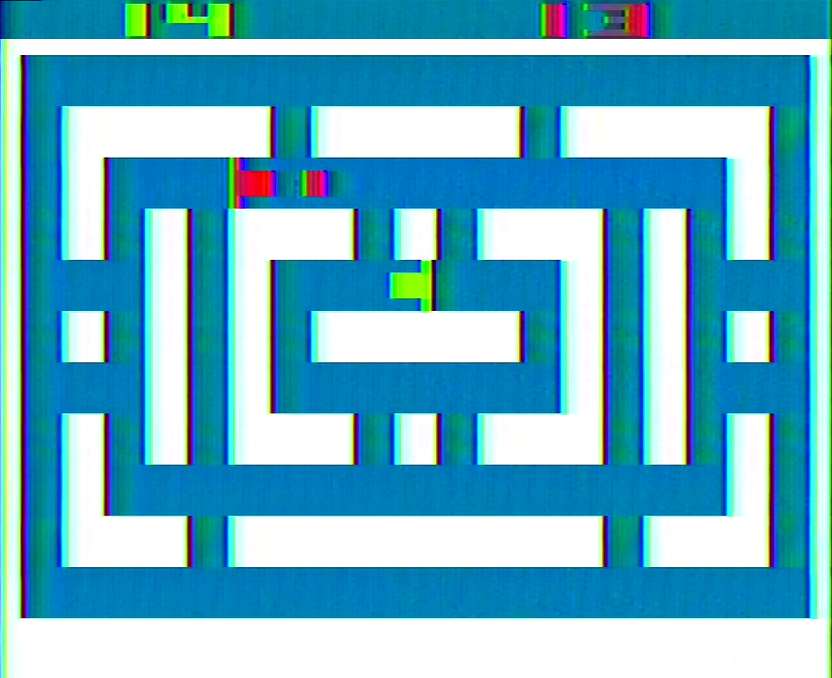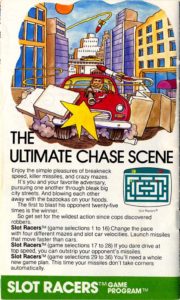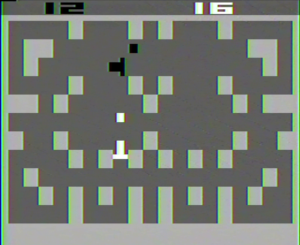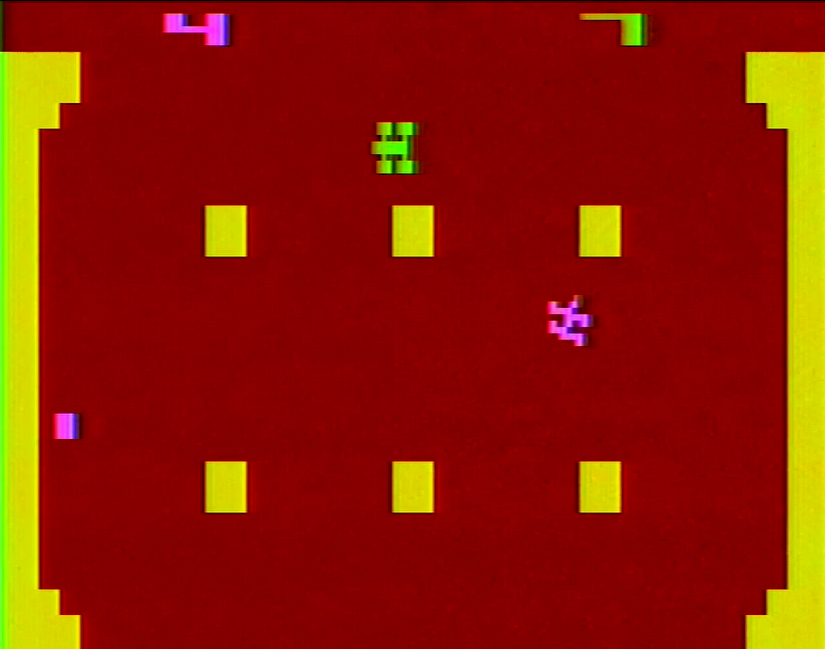

Most of the Atari VCS games we’ve looked at so far are ones where you know what you’re getting into just from the title. A game named Indy 500 is probably about racing. Space War is most likely going to have you fighting in outer space. Blackjack is going to involve playing cards, and so forth. But then you get to Slot Racers, and you’re probably going to be kind of baffled. What the heck is going on here, you might ask? After all, slot racing in real life is little more than model cars you insert into an electrically connected track and drive around a predetermined route. This game has player vehicles driving around a maze shooting at each other. If you have the Sears version of the game, which was released under the title Maze, you might have a better idea of what you’re getting into here. But the reason Slot Racers seems so far removed from the source material is because that wasn’t the premise in the first place.
 But before we get into that, we have to step back a moment and recognize that Slot Racers is the first Atari VCS game developed by Warren Robinett. Best known for his seminal 1980 VCS game Adventure, Robinett was part of the second hiring wave of Atari home video game programmers, coming on board in November 1977 – shortly after other notable Atari developers like David Crane and Jim Huether joined the company. Robinett wrote about his experiences at Atari and developing Slot Racers in his book (unpublished as of this writing), and graciously provided me with a copy of the manuscript to help describe the development of his three VCS titles. He also explained to me that he felt that the best way to figure out how to program a game for the VCS within its limitations is to just start writing a complete one, and while driving to work one day he had an idea in his head for a game he called “Traffic.” In it, two cars would be driving around a city maze firing rockets at each other in a severe case of road rage.
But before we get into that, we have to step back a moment and recognize that Slot Racers is the first Atari VCS game developed by Warren Robinett. Best known for his seminal 1980 VCS game Adventure, Robinett was part of the second hiring wave of Atari home video game programmers, coming on board in November 1977 – shortly after other notable Atari developers like David Crane and Jim Huether joined the company. Robinett wrote about his experiences at Atari and developing Slot Racers in his book (unpublished as of this writing), and graciously provided me with a copy of the manuscript to help describe the development of his three VCS titles. He also explained to me that he felt that the best way to figure out how to program a game for the VCS within its limitations is to just start writing a complete one, and while driving to work one day he had an idea in his head for a game he called “Traffic.” In it, two cars would be driving around a city maze firing rockets at each other in a severe case of road rage.

